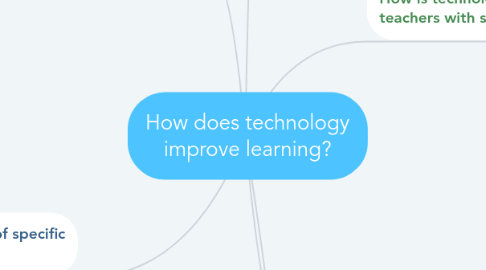How does technology improve learning?
作者:Valerie Morrison

1. Use of instructional technologies in class environment is important.
1.1. Instructional technology in the classroom is important to increase learning. They promote interest in the learner which in turn facilitates learning.
1.2. Understanding that a piece of technology could resolve a pedagogical issue required an understanding of the technology itself and the context—the content, the students, and the teacher (myself).
1.3. With technological, pedagogical, and content knowledge, I discovered a new avenue for learning mathematics, and through this, my students might also have been given an opportunity to see themselves in a new light—as mathematical thinkers.
2. Effectiveness of specific technologies.
2.1. As a result, we can say that a reading fluency intervention with tablet computers does not offer significant benefits, as the findings only show that it is slightly effective.
2.2. Examining YouTube clips helped students gain skills in working as a team, collaborating on examining information and connecting or questioning its content, in relation to theory and application.
2.3. Electronic books have shown the ability to engage students and motivate them to read.
3. How do we know learning has occurred?
3.1. Current research is emphasizing that technology in early learning programs "supports and increases young children's skills in social, cognitive, language, literacy, writing and mathematics realms"
4. What technology is available to classroom teachers and what barriers do they encounter?
4.1. Educators benefit from themselves exploring, experimenting and using technology
4.2. By implementing the EMAT materials in the last few years (more than a decade after they were developed), student achievement and assessments had improved dramatically,
4.3. The general consensus in the literature is that barriers to the integration of technology into classroom learning should be overcome, with some recommending using a strategic plan that involves intervention strategies.
5. How is technology used by teachers with students?
5.1. Teachers need to develop curricular plans on how exactly they will incorporate technology into their lessons.
5.2. Few teachers using technology in classrooms, and of those who did, for simply presenting information, projecting videos, plotting graphs or checking results produced in paper-and-pencil, with very rare use of technology by students.
6. Teachers lack the skills and knowledge necessary to promote technology use. PD
6.1. Teachers are aware of the importance of educational technology use in courses and that they are not yet willing to use such technologies not only due to lack of the necessary sub-structure for technology use in courses but also due to lack of related support of the school administration and due to insufficient knowledge about use of such technologies in education
6.2. Poor implementation results from a lack of understanding of some crucial component of how the technology supports learning the content, how the students will respond to the technology, and how well the teacher understands the benefits that the technology provides for his or her particular students.
6.3. Teachers and students’ attitudes, beliefs and confidence with regards to the use of the technological tools and programs: these have been shown to have an impact on students’ learning with the tools
6.4. Among these: difficulties in accepting changes (even when they recognize possible benefits of DT) with many of them continuing doing the same as before; fears (e.g. of losing control of the class, of showing mathematical and technical deficiencies); difficulties in understanding how to integrate technologies in terms of the mathematical aims; lack of adequate infrastructure; and lack of time.


